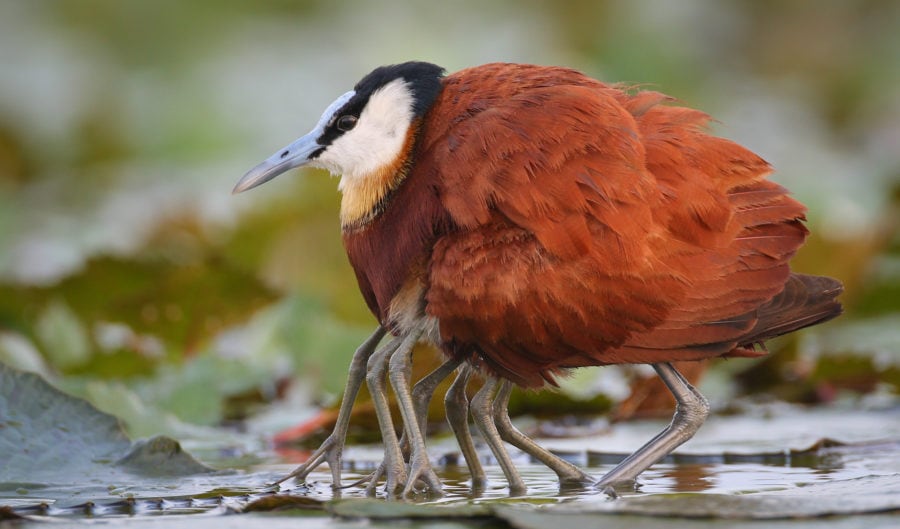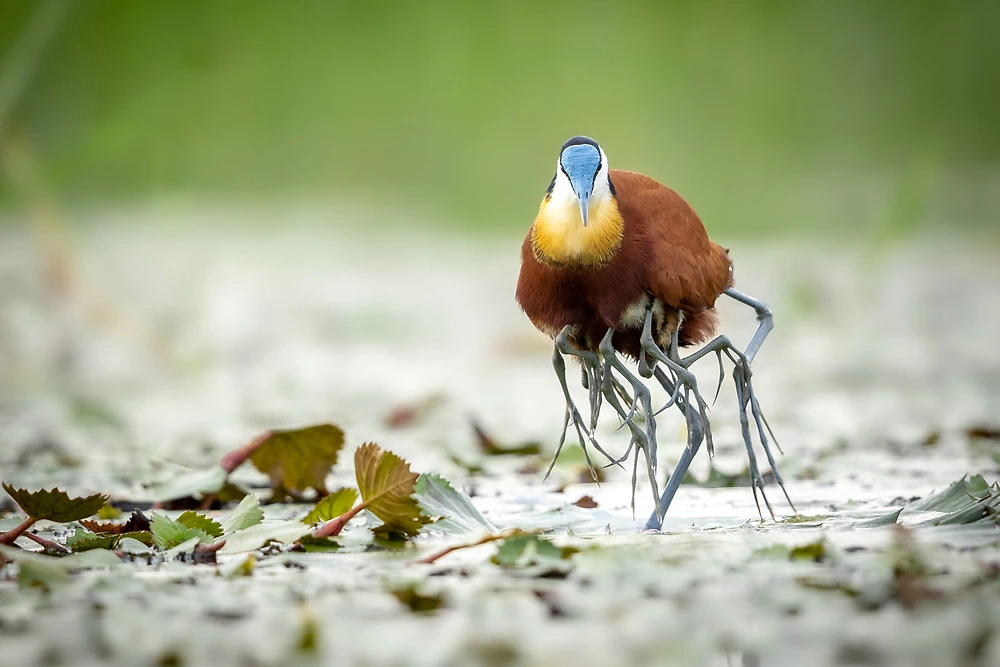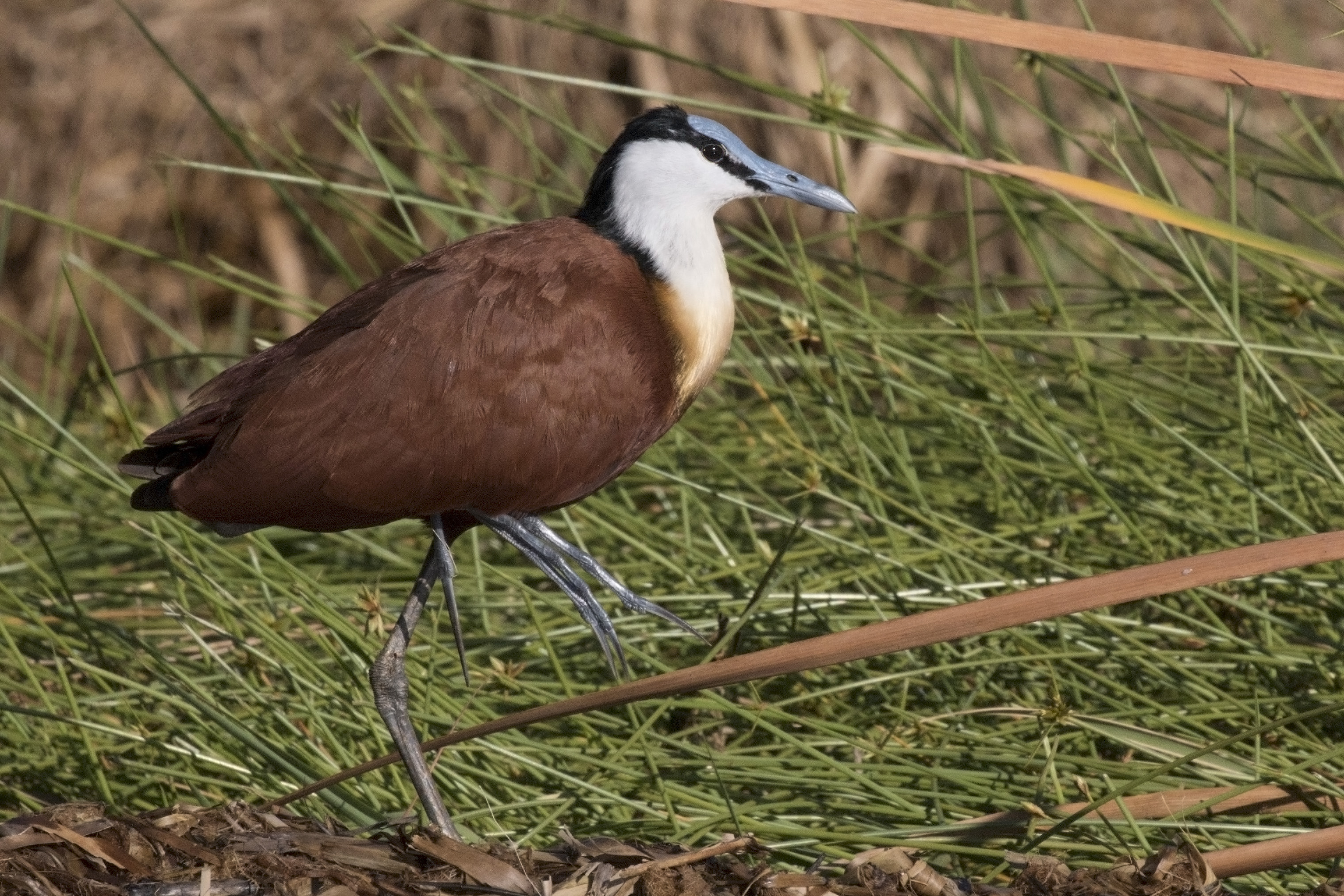Have you ever heard of the African jacana bird? If you haven’t had the chance to witness this unique creature in person, you might find yourself a bit perplexed by the image you come across online. At first glance, you might mistake it for a millipede or even an extraterrestrial being! But fear not, this is a real bird that exists right here on Earth. Those long legs you see in pictures aren’t prosthetics either – they’re the real deal.
Known scientifically as Actophilornis africanus, the African jacana is a type of wading bird that can be found in sub-Saharan Africa. So next time you see a photo of this fascinating animal, you’ll know exactly what you’re looking at!

Described as a mid-sized bird, the Jacana measures approximately 23 to 31 cm in size, and like many other common animals, the females are generally larger than males. Male Jacanas weigh about 137 grams while the females tip the scale at 261 grams, making them the largest among all Jacana species. Also known as the crested bird or chili bird by the Thais, this waterfowl queen is characterized by its long feet and is one of the seven species found in tropical regions around the world, particularly in swamps and marshes. The African Jacana, for instance, resides in African swamps and feeds on crabs, fish, and small aquatic animals.
One of the unique features of the Jacana is the presence of dark stripes from its eyes, back of the head, to the tips of its wings. Its wings are dark brown, while the bill is blue and reaches the middle of its head. Also, the Jacana boasts of long gray legs and a dark brown underside. However, before maturity, they appear white and have dark brown stripes on their abdomen.

The baby birds seem to be well guarded, and their vibrant yellow hues blend in perfectly with their surroundings to avoid attracting unwanted attention from predators. However, what sets them apart is their numerous legs. These birds possess incredibly thin legs and toes, with each finger sporting claws that can reach up to 7 cm in length. This unique feature enables them to effortlessly traverse a wide array of aquatic plants present in shallow ponds, foraging for insects and small animals among the piles of floating vegetation.
During the breeding season, these creatures construct floating nests in the region to procreate. The female counterparts have the ability to mate with various male partners. Each nest contains about four eggs, which have a caretaker until they mature. While searching for nourishment in water sources, the creature has to take along its offspring. This is why we notice that it possesses numerous additional small legs, which are actually the legs of its offspring.

